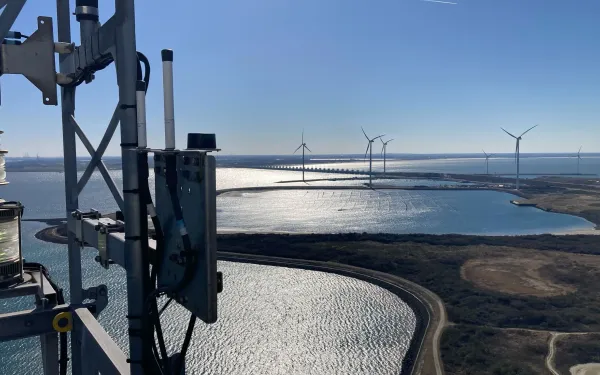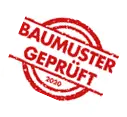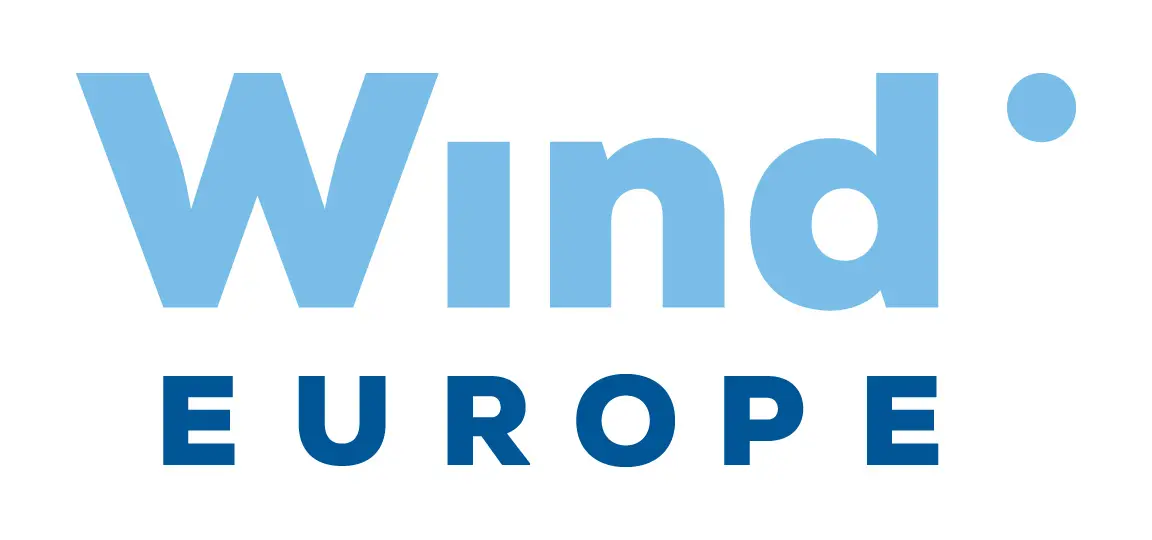OWO windfarms: Transponder ADLS between dike and dam
ADLS for more acceptance of wind turbines: Interview with Ton Hirdes and Karel de Dreu from E-Connection
Location of wind farm: | The OWO windfarms are situated on dikes on and around the storm surge barrier Oosterscheldekering in the province Zeeland in the Southwest of the Netherlands. |
Number of wind turbines: | 32 |
Total installed capacity: | 124 MW |
ADLS activated since: | 1 March 2024 |

photo by
What is your take on the future relevance of Renewables?
Ton: We are convinced that sustainable energy is the future. It’s fairly simple: We have to get rid of fossil energy and we have to be more independent from other nations, such as Russia and Arab countries.
Can you tell us about your organization and your role?
Karel: The company was founded in 1986. The owner of the company started at a consultancy for renewable energy around the time when Chernobyl happened. All of a sudden, the question of alternative energy supply to substitute nuclear energy became very relevant. But nobody had yet started building wind farms, so we began a cooperation with a bank. The bank had the money, we had the plans, and we started building wind turbines. My professional background is mechanical engineering. I started 32 years ago as an operator, and now I’m a project manager in operations and in charge of new projects as well.
Ton: I’ve been working in wind energy for around 20 years at several places. Before that, I was in politics and worked as a journalist. Today, I am responsible for permits.
“The goodwill of residents cannot be underestimated.”
– Ton Hirdes
Can you give us some facts and figures about this specific wind farm?
Karel: This wind farm is a conglomerate of several wind farms. The first one was built in 1989, and since then we repowered some parts of the location three times. The latest and biggest repowering started in 2020 and was completed in 2022.
Was there any specific challenge because of the location of this particular wind farm?
Karel: Since we’re in the Netherlands, we are building on and around the dikes because there’s a lot of wind and you have no neighbors. But it’s always a challenge with the Rijkswaterstaat (Ministry of Infrastructure and Water Management) to get the permits.
What was your first impression when you heard about ADLS?
Ton: Well, we first heard about radar systems. That must have been in 2020.
Karel: I saw the ADLS around 10 years ago in Husum at the trade fair. But even in Germany it wasn’t allowed back then. It was a thing of the future. But the system seemed very clever and very practical. We had a lot of discussions about it, whether to make the turbines smaller so you don’t need lights, but that costs a lot of green energy. The alternative at the time was a very expensive radar system.
Ton: When we started here with repowering, we first thought of a radar system because we knew that that was going to be allowed by the Dutch authorities. Fortunately, later-on, the ADLS was also approved. But that wasn’t the case yet in the beginning.
Karel: We were in close contact with Windpark Krammer, with Gijs van Hout, and following his first steps in the project.
Ton: You will always have some initial problems, and he had all the problems you could imagine for which we needed to find a solution. Therefore, we were very fortunate that somebody else had done it before and we could draw on those experiences.
“The issue of light pollution is definitely an important one.”
– Ton Hirdes
Can you tell us about your collaboration with LSS?
Ton: From the beginning on in our partnership with LSS, we had the same goals. We had to convince the authorities, the ILT, that a transponder system is safe and they should approve it. LSS already had one system activated at Windpark Krammer, so they already had the experience and we figured the approval process would go more smoothly despite some challenges.
Karel: When it came to the installation part, we had good cooperation with Enercon as a provider of the turbines. They also installed the obstruction lighting for us. But at the time, LSS had no service team in the Netherlands, so that took some time. The testing period with Jochen (Jochen Fuglsang-Petersen, LSS Head of Technology) went very well. It gave us a good idea how the system worked. So that was a very positive experience. When it comes to beginners’ problems, as Ton mentioned: We had a lot of them! But when those problems were taken care of and the lights finally went out during the night, we received positive feedback from the residents who were very happy with this solution.
Was there any more feedback from the residents?
Ton: As long as the system works and the lights are out, we won’t hear anything. But as soon as there’s a problem, we get immediate feedback from the residents, even from the municipalities, because people complain to them, they don’t come to us directly. So, for us, the most important thing is that it works, because then we don’t have trouble with our neighbors. The goodwill of residents cannot be underestimated, because you might need their approval for other projects, such as repowering. You don’t want people to be dissatisfied, and the issue of light pollution is definitely an important one: We have some other projects in the region, and they’re all asking from the beginning to turn off the red lights. The upside is of course that we can now refer to the project on the Oosterscheldekering: “You can come and have a look. As you can see, we know how it works, we can do it here as well.“ In other words: ADLS has a positive impact on other projects, too.
“ADLS has a positive impact on other projects, too.”
– Ton Hirdes
What is your take on the future of transponder-based ADLS in the Netherlands and internationally? Will it help to boost the acceptance of wind energy among the population and the relevant stakeholders?
Ton: Absolutely, yes, because it solves a relevant problem for residents. In the wind energy sector, we have to be very aware of the public’s views. It’s a good signal to the public that our industry together with the ministries recognized and solved this particular issue, also on offshore windfarms. There are a lot of offshore wind farms in front of the coast here. It’s a sea of red lights, which could be avoided.
If other operators are now interested in equipping their wind farms with ADLS, what words of advice do you have for them?
Karel: My advice would be: Start early because there’s a lot of research and tests to be done.
Ton: And be prepared that there can always be hiccups. We were very careful in the beginning not to be overconfident.
Karel: We sent out the information to the municipalities that we were in the testing phase. Only when we were confident that everything was fine and working did we share the details because we wanted to prevent people expecting too much too soon and being disappointed in case the project takes a little longer and is perhaps more complex than expected. My takeaway is: Manage the expectations. For instance, we could have started the system around Christmas but decided to do it a bit later, because during the holidays, if anything went wrong, there would be fewer people around to help us. Timing is a relevant aspect as well.
Karel: And also explain the technicalities, for example that there’s a twilight zone of approximately half an hour during which the lights have to be turned on, because it’s the time that the last airplane goes to the airfield. Having this constant exchange with the residents and sharing information is always crucial.
Thank you so much for your time and your interesting insights!





